Hawk 75A-4 “Mohawk IV” RAF, Special Hobby 1/32
This is the Special Hobby Hawk 75A-4 "Mohawk IV" kit.
The French Air Force, in addition to ordering the Pratty & Whitney-powered Hawk 75A-1/2/3, also ordered the Hawk 75A-4, which differed by being powered by a Wright GR-1820 Cyclone 9 engine. The Hawk 74A-4 was the fastest of all, with a top speed of 323 mph. The Wright engine was far more troublesome than the Pratt & Whitney. In fact, when the Finns received Hawk 75A-4s, they eventually changed engines to the P&W for this reason, despite the loss of speed. 200 Hawk 75A-4s on order for France were taken on by the RAF following the Franco-German armistice in June 1940. Additionally, 12 similar Hawk 75A-8s originally sold to Norway, as well as 12 Hawk 75A-9s sold to Iran, were taken over by the RAF, with all collectively known as the Mohawk IV in RAF service. After being assembled in the UK and kept at Maintenance Units while there was danger of a German invasion, the Mohawks were sent overseas beginning in late 1941.
72 Mohawk IVs were used as fighter trainers in South Africa, though at least one SAAF squadron did use them for air defense of Capetown until 1943, when the likelihood of an Axis air attack was remote. Portugal invoked its ancient treaty of defense with Great Britain and 12 Mohawk IVs were supplied to the Portuguese Air Force where they equipped one fighter squadron in the Azores. The remaining Mohawk IVs were eventually sent on to India, where 5 Squadron RAF began equipping with the Mohawk IV in December 1941, providing the sole fighter defense of north-east India until May 1942. In March 1942, 146 Squadron equipped with Mohawk IVs. The two squadrons were joined by 155 Squadron in September 1942, forming the "Mohawk Wing."
The Mohawk IVs were used for bomber escort, standing patrols and close support over the eastern India front and Burma. In January 1943, the squadrons began “Rhubarb” operations, sending flights of 2-4 fighters free-ranging over enemy territory at low altitude in bad weather, strafing whatever enemy activity they came across. The maneuverability of the Hawk 75 was put to good use on these operations, which frequently constituted the only offensive RAF operations during the monsoon season which began in May and lasted through October. The Mohawk Wing was heavily engaged in ground-support operations during the heavy fighting following the Japanese invasion of Imphal in February-March 1943. 5 Squadron turned in their Mohawks for Hurricanes in June 1943, followed by 146 Squadron that October. 155 Squadron was the last Mohawk operator, exchanging their Mohawks for Spitfire VIIIs in January 1944. At least six JAAF Ki.43 Hayabusa fighters were shot down by Mohawks during their escort and rhubarb missions, including two credited to the Mohawk IV “Joe Soap II,” which was operated by 155 Squadron.
The kit differs from the other P-36/Hawk 75 kits in having the forward cowling parts for the short-chord cowling associated with the Wright engine, and a Wright R-1820 in plastic. Assembly was accomplished using the experience of the other kits. The model was painted in the Temperate Land Scheme of Dark Earth, Dark Green and Sea Grey Medium with Xtracrylix acrylics which were also used for the Yellow ID markings and Sky band. Kit decals were used to create the top-scoring "Joe Soap II."
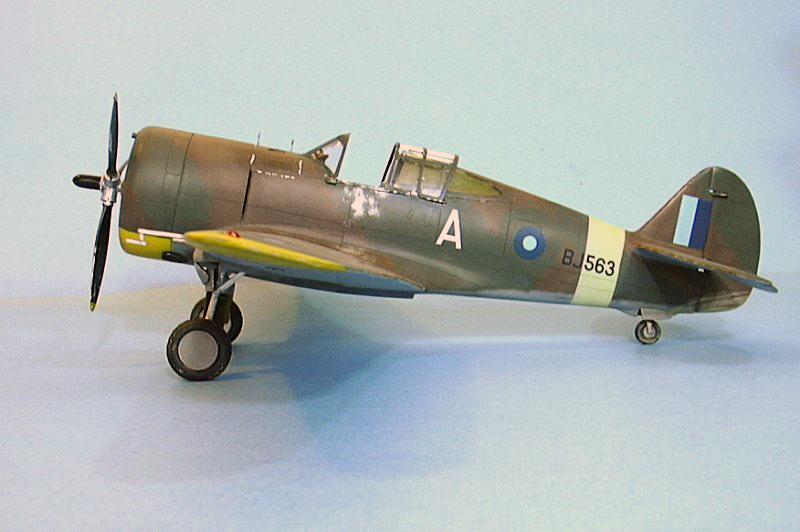
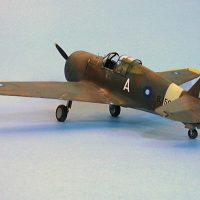
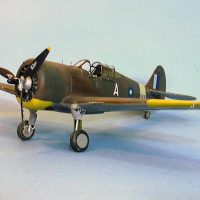
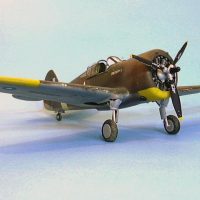
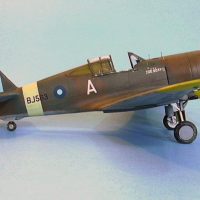
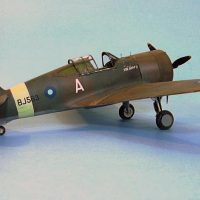

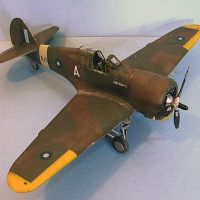
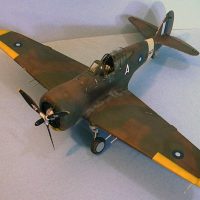
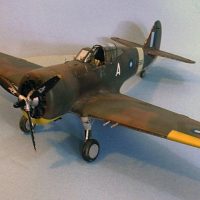
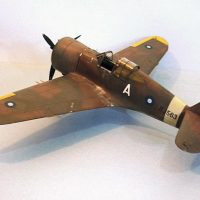
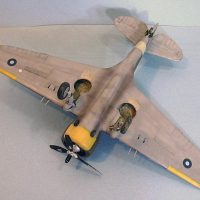
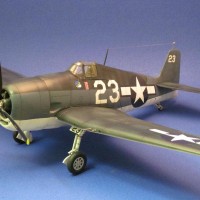
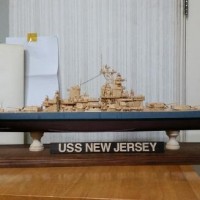
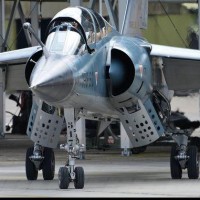
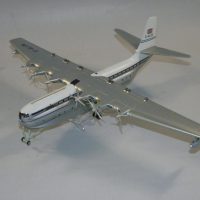
Another fine job Tom. Dayum, how many finished planes do you have? That's an impressive output my man.
Gary
Not all from this year. 🙂
I sometimes amaze myself when I look back at the output. The fact is a writer doesn't work all the time, and for all those times when you aren't (but wish you were) and when it isn't working (and you need to get past the block), building a model is "good therapy."
Here's to therapy! Another beaut, Tom.
If this is what writer's block does for you, than I must change jobs!
Yeah, you sit there doing something completely unrelated to the problem, like a model, and a couple hours later you not only aren't blocked, you have the solution. I call it "sidereal thinking."
Another fine historical example Tom. I hope that maybe one day my work will be half a good as yours. As for the subject, weren't they also used by Nationalist China?
One with the fixed gear was used by Claire Chennault. Check with Bill Koppos on how "easy" that project is.
Very good, something you won't see every day. I like it
Tom,
Another good looking Hawk. Your model brings the airplane to life.
Always liked this one. I get a huge kick out of accounts in Osprey's "P-36 Aces" how the Mohawks were able to outturn the Ki-43 Hayabusa, supposedly the War's tightest turner. Curtiss didn't design no dog...
Tom, I would love to see them all together. They are really impressive.
If you ever get a chance to go to Chino, they'll soon be there on the same shelf of a new glass case.
Another terrific build, Tom. Love the subject as well.